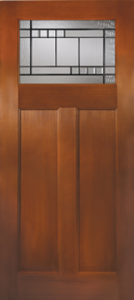Prairie Style homes look as though they meld with the landscape. If you’re driving too fast or you blink, you might miss one. Granted they are few and far between but the style was imagined and inspired in the American Midwest. If you’re going to happen upon one, your chances are better in Illinois, Wisconsin, Michigan and Minnesota than anywhere else.
It was our vast, flat, tree-less landscape and the natural colors of our environment that gave inspiration to the men and women who imagined this style. Louis H. Sullivan, Frank Lloyd Wright, Dwight Perkins and the first licensed female architect, Marion Mahony Griffin, are some of just a few who set up a shared space in the new Steinway Hall in Chicago, in 1896. The Great Chicago Fire of 1871 and the World’s Fair had attracted them to Chicago with its seemingly limitless need for new buildings.
Together, they envisioned buildings, both residential and commercial, that looked as though they were in harmony with the landscape around them, with simple and understated details. They were equally interested in developing an aesthetic which was not reliant on anything that had come before. Designing another revival of Greek, Tudor or Victorian architecture was not of interest to these visionaries.
To pick out a prairie style home, look for these common characteristics:
- Horizontal lines at the roof, window and foundation lines.
- Low pitched, hipped roof with overhanging eaves
- Stained entry doors
- Leaded and stained art glass with linear designs.
- Windows which create bands of pattern across the exterior of the house.
Because they shared a reverence for natural materials and craftsmanship, Prairie Style architecture is seldom painted or over sized. Details and ornamentation are either geometric or a stylized, geometric version of a plant or flower. And while Frank Lloyd Wright is considered the most notable architect of this style, and he’d like you to believe that, it was truly a group that envisioned, created and made this style a structural reality.
-Holly Bayer, ASID

